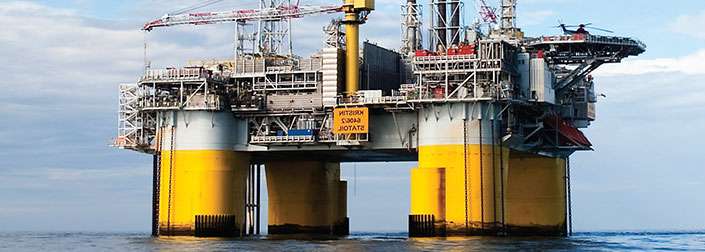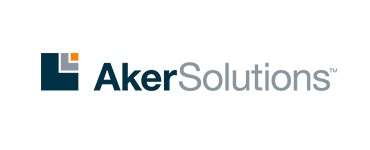Aker Kværner continues managing oil and gas complexities with Safran for reliable project control via interface management
Aker Kværner is a global engineering group providing engineering and construction services, technology and solutions in a range of sectors including oil and gas, refining, chemicals and biotechnology. Employing 22,000 in more than 30 countries, Aker Kværner was one of the first customers for Safran’s project management software, chosen because of its geographical, cultural and historical ties with the oil and gas industry.
So far, Safran’s software has been a contributing factor in the success of many projects executed by Aker Kværner, so it was an obvious choice for Vice President of Project Management Tom Henningsen when he became responsible for planning the engineering and construction of Topsides on behalf of Aker Kværner for its client Statoil. Henningsen would lead construction of the high pressure and high temperature Kristin process deck at the Aker Stord yard in Norway to ensure delivery of a completed platform facility which would meet with an exacting client’s schedule. And he had to do it all within a fixed time frame, coping with delays caused by events over which he had no control.
Identifying budget and schedule risk through project interfaces
On an at-risk project such as this, identifying budget risk and finding ways to reclaim the control within the remaining budget is critical. And identifying risks across project interfaces is the only way to accomplish this. “If you are running an EPC project on a lump sum you are running a large risk with respect to the project’s interfaces,” says Henningsen.
Managers needed a system which could identify, catalogue and integrate all project elements in a way which would optimize a build process, to ensure the best possible project delivery in terms of both time and cost for the client – and their own profitability.
“If you are just doing engineering for a project, if you deliver engineering drawings, it does not matter if a fabrication yard needs them a week earlier and could cost them another US $1 million,” Henningsen illustrates. Also, if a fabricator received compressor equipment after steel supports on a process deck were completed, then it would be up to the fabricator to install the compression equipment as best as he can – before the next deck is built on top. It’s these kind of interfaces that Safran’s project management software is designed to identify and manage in an optimal way, to avoid clashes in a construction program.
Supported by oil and gas industry veterans
“When EPC-style projects became the name of the game, it was to our competitive advantage to have the optimum support with EPC contracts,” Henningsen says. “We needed a more sophisticated planning system that was capable of networking with a multitude of processes and a lot of activities in a very large activity network.”
Several systems were evaluated by Aker Kværner but the company opted for Safran’s project management software because rival systems were considered to be less flexible and less powerful. Henningsen describes a rival system as more accountancy based, a much more generalized system, whereas Safran is designed to support complex projects in the oil and gas industry.
Transitioning to better “what-if” functionality
Henningsen has extensive experience from the oil and gas industry from working for Aker Kværner, and previously Kværner, since 1980. The transition to Safran’s project management software ten years ago meant a more coherent and systematic approach to overall project management. For example, previous systems could not match Safran’s sophisticated capability for “what if?” scenario planning to check the impact of events further along a project’s cost and timing schedules.
As Henningsen explains: “Other systems that we were looking at had bar charts and things which were quite good, but they did not have the interfaces that we needed. Safran has the functionality that we need and it is easy to sort information in any shape or form. It is user friendly and you can extract information both in a standard form and for reporting – you can extract reports to analyze a particular aspect of a project.”
On Kristin, Safran’s project management software was relied upon to provide control of all engineering, procurement and construction work. It controlled the schedule by which engineering drawings had to be completed, to interface with procurement and construction activities. Equipment specifications, ordering, and delivery checking were input to Aker Kværner’s Kristin project execution model (PEM), which relied on Safran. “There were a lot of people communicating with Safran every day. On Kristin it was in the region of 100 people,” says Henningsen.
Addressing specific oil and gas needs
What makes Safran so specific to oil and gas projects? “Developing a project management system is part of the evolution of managing projects. Safran allowed us to handle networks of previously unmanageable sizes and levels of detail. Being able to add more details to your schedule ensures accurate planning of the work to be completed and all relevant and real-life interfaces between the different activities allow us to exercise tighter control of our projects. Previously we were constrained by the limitations of less sophisticated software. Safran really excels when it comes to handling complex projects in complex environments.”
One of the key points Henningsen makes about project management is the need to retain control throughout the work, from first engineering through procurement and construction to delivery. “If you lose control of a project it can cost you astronomical amounts of money. If you get delayed, you have to pay damages to the client, and if you lose control you have to recover and that recovery process is very costly. If you fall behind the schedule you have to put a lot of manpower to work in a non-productive sequence. It could easily cost you millions of dollars.”
Safran’s project management software has gained its prominence largely due to its flexibility. “When you get surprises, changes or variations, the system is very responsive to putting those activities into a chain of events. It is easily added in. I think Safran is superior in that respect,” Henningsen says.
Two major elements of the Kristin platform’s construction – a riser balcony and a flare tower – were both completed late by an outside contractor. Welding cracks on the flare tower had to be rectified before it could be installed on the platform. This additional work had to be built into the project schedule. Safran allowed Aker Kværner to manage it so that they did not miss their delivery date for load out and mating with the Kristin semi-submersible hull, built by Samsung in South Korea. “When we get incomplete work from other suppliers or contractors, we are able to implement those [additional] activities into our network and work it into a chain of events, allowing us to reach our delivery target.”
The Kristin platform is now safely moored in the North Sea, on schedule. Preparations are well underway to ensure an equally safe arrival of the first oil and gas in the platform’s production facility.


